 Computers
Computers
-
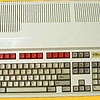 Acorn Archimedes
Acorn ArchimedesAcorn Archimedes computers were standard school issue in the early 90s and replaced the aging BBC computers that had served the previous generation.The Archimedes was the very first RISC-based personal computer and was technically a very advanced machine. Unfortunately the ...
-
 Acorn Electron
Acorn ElectronAs the first home computer I ever saw, the Acorn Electron was a bit of a disappointment design-wise.The Acorn Electron had a cream plastic case that looked like you should lift off the top to reveal a secret compartment with ...
-
 Amstrad CPC
Amstrad CPCAmstrad is a UK-based electronics company which was founded in 1968 by Sir Alan Sugar, the company name is an abbreviation of Alan Michael Sugar Trading.To capture the market from Sinclair and Commodore, the company began production of its own ...
-
 Amstrad CPC 6128
Amstrad CPC 6128The Amstrad CPC 6128 was a classy and powerful 8 bit computer from the second half of the 80s. Retailing at ?400 in 1985 made the 6128 more expensive than any other home computers, but you got lots of hardware ...
-
 Apple Lisa
Apple LisaThe Apple Lisa was the first personal computer with a GUI (Graphical User Interface). Before the Apple Lisa all computers used command line interfaces for every task even for simply moving a file from A to B. So when the ...
-
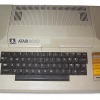 Atari 800
Atari 800The Atari 800 looked like a typewriter with nowhere to put the paper, but it wasn't a bad machine in its day. I've still got mine around somewhere. The top lifted up on the Atari 800 to reveal a cartridge ...
-
 BBC B
BBC BMy third computer was a BBC B (the first two being a ZX Spectrum 48k and then a ZX Spectrum 128k). The BBC B computer was made by Acorn and when you turned it on booted straight in to BASIC ...
-
 Commodore 128
Commodore 128...
-
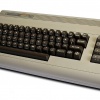 Commodore 64
Commodore 64I got my first Commodore 64 in 1984 and I still have it now - it works just fine. I have the monitor, printer and disc drive and still use it for amateur radio, packet programs and morse code also. ...
-
 Commodore Amiga
Commodore AmigaAfter seeing the Commodore Amiga on Micro Live and hankering after an A1000 after seeing the juggler demo in SilicaShop, the release of the A500 was every school nerd's dream, an affordable 16-bit multi-tasking computer! Blessed with being released in ...
-
 Commodore PET
Commodore PETThe Commodore PET was a huge computer which looked so space-aged. The monochrome screen could display certain characters so most of the games consisted of guiding an asterisk around a line maze. A girl brought one of these in to ...
-
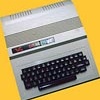 Dragon 32
Dragon 32After my faulty VIC-20 was returned, my parents bought me a Dragon 32. That worked but those analogue joysticks that didn't spring back to the centre made playing games a nightmare!I had a dot matrix printer but no word processor ...
-
 IBM or compatible PCs
IBM or compatible PCsThe IBM-style PC has been around since 1981, but few recognise it as retro.At school I remember using a flickery, blocky 4 colour display and being expected to draw a decent picture on it. This was around 1984 and I ...
-
 Oric 1
Oric 1This was out the same time as the Spectrum 48k. We thought it was better, but those keys were a pain in the bum! ...
-
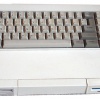 SAM Coupe
SAM CoupeSAM Coupe was an 8-bit computer that that took its 'coupe' name from the shape of it when looking at it from the side. The SAM Coupe was released in 1989 and was supposed to have graphics similar to a ...
-
 Sinclair ZX-81
Sinclair ZX-81At the birth of popular computing in the late 70s, Sinclair brought out its touch-pad ZX-81 with a whole 1K of memory! I remember figuring out how to plug it into my portable black and white TV and then tuning ...
-
 Timex Sinclair 1000
Timex Sinclair 1000The Timex Sinclair 1000 was a very small computer developed in England and then picked up by Timex. It sported a 1K memory and flat touch keys with multiple usuage for each key. Output was fed in to a ...
-
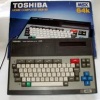 TOSHIBA MSX
TOSHIBA MSXThe Toshiba msx 64k, for all computer geeks out there. Produced by Microsoft Japan, it played both tapes and cartridges and the graphics were quite good.It was the precursor to home entertainment systems by Nintendo and Spectrum ...
-
 TRS-80
TRS-80The TRS-80 was a family of computers made by Tandy Radio Shack Ltd that was launched in 1977. The TRS-80 Model 1 was a home computer with a 1.77 MHz Zilog Z80 processor and 4kb of RAM and 4kb ROM.Later ...
-
 VIC-20
VIC-20My very first home computer was the VIC-20. I chose the VIC-20 simply because of the little symbols on all the keys! With certain key presses you could 'type' in the symbols and make drawings.The silly thing didn't recognise half ...
-
 ZX Spectrum 128k
ZX Spectrum 128kThe ZX Spectrum 128k followed on from the rubber-keyed Spectrum 48k model and sported an impressive 128k of RAM which let you play much more advanced games that the 48k simply couldn't handle. It also had better sound capabilities.There were ...
-
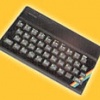 ZX Spectrum 48k
ZX Spectrum 48kMy first computer was the ZX Spectrum 48k and despite its humble processor and meagre amount of RAM it managed to run a full-featured flight simulator and some pretty cool arcade games. Who can forget the rubber keyboard, the screeching sounds ...













